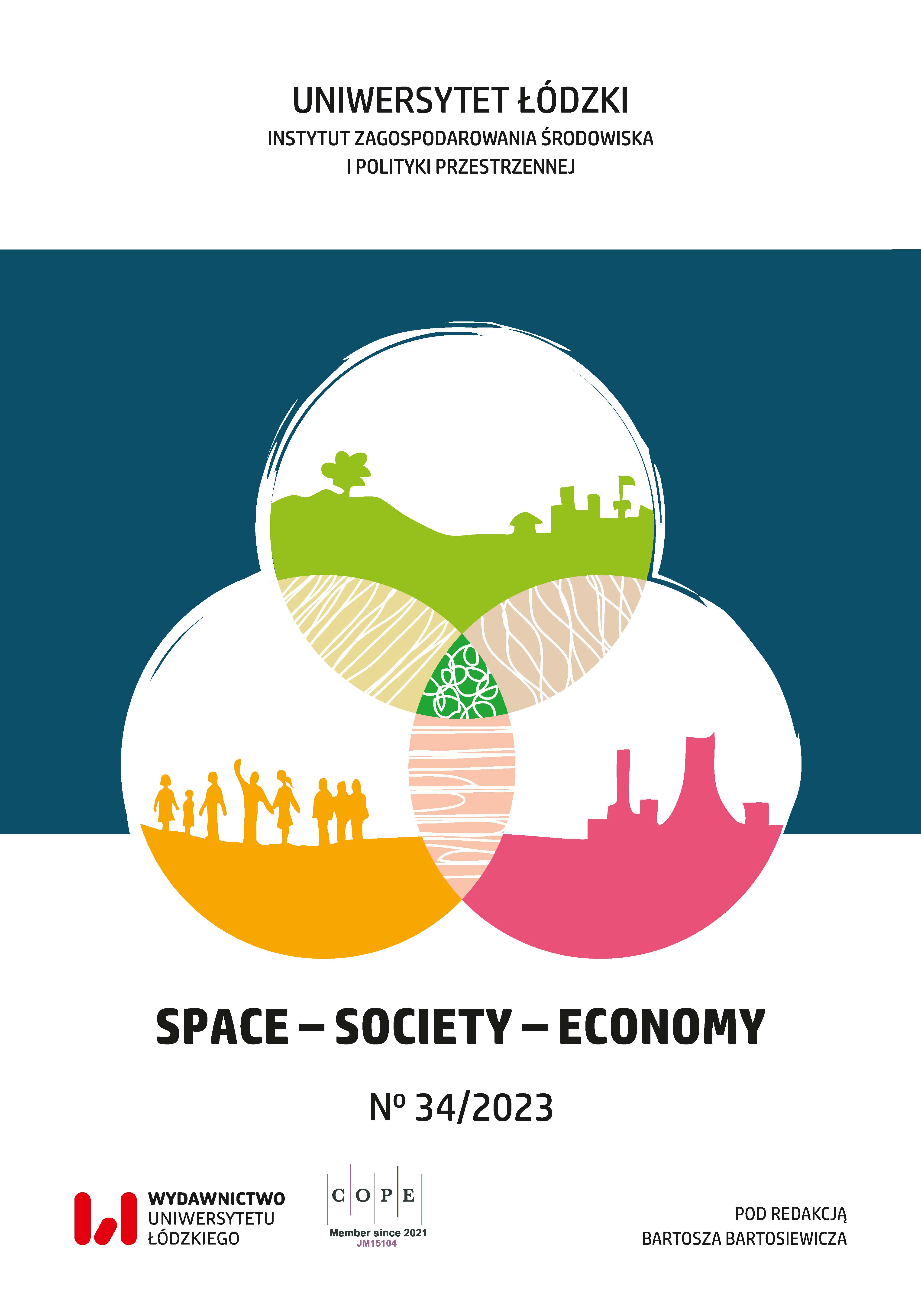Regionalne budownictwo mieszkaniowe w Europie: zmienność i typologia przestrzenna
DOI:
https://doi.org/10.18778/1733-3180.34.06Słowa kluczowe:
regionalne budownictwo mieszkaniowe, wernakularne domy mieszkalne, tradycyjne budownictwo ludowe, EuropaAbstrakt
Przedmiotem tego opracowania jest regionalne budownictwo mieszkaniowe w Europie, a podstawowym celem jest analiza jego zmienności i typologii przestrzennej. Budownictwo regionalne można utożsamiać z budownictwem wernakularnym. Zgodnie z pojęciem przyjętym w architekturze domy wernakularne są zakorzenione w historii, stanowiąc obiekty wznoszone głównie przy zastosowaniu tradycyjnych materiałów i stylów, przez miejscowych budowniczych. Zwykle są to nieduże konstrukcje, bazujące na lokalnych surowcach budowlanych. Budowano je we wszystkich okresach historii architektury.
Poszczególne typy budownictwa regionalnego cechują się specyficzną zmiennością przestrzenną w Europie. Dotyczy to w szczególności domów drewnianych, a także domów z cegły i domów kamiennych. Tradycyjne domy drewniane są reprezentowane przez domy zrębowe i szkieletowo-słupowe. Domy zrębowe, budowane z poziomo ułożonych belek drzew iglastych, dominują przede wszystkim w północno-wschodniej Europie i wielu regionach górskich (Alpy, Pireneje, Karpaty, Ural). Domy szkieletowo-słupowe z drewnianym szkieletem i ścianami wypełnionymi gliną (szachulec) lub cegłą (mur pruski) są rozpowszechnione głównie w Europie Zachodniej oraz w Skandynawii. Domy z cegieł wyróżniają Europę Zachodnią i Środkową, podczas gdy domy kamienne – Europę Zachodnią i Południową.
Dobrze udokumentowana typologia tradycyjnej zabudowy wiejskiej, bazująca na ewolucji rozplanowania poziomego i pionowego domów, została zaprezentowana w pracy pod redakcją Siergieja A. Tokariewa. Wyróżniono w niej osiem typów domów: 1. środkowo-wschodnio-europejski, 2. południowoeuropejski, 3. zachodnioeuropejski, 4. anglosaksoński, 5. alpejski, 6. baskijski i jurajski, 7. północnoskandynawski, 8. południowoskandynawski.
Zmienności budownictwa wernakularnego w skali regionalnej towarzyszy jego zróżnicowanie wewnątrzregionalne (lokalne). Dobry przykład takiego zróżnicowania stanowi włoska wyspa Sardynia. Na podstawie cech morfologicznych, konstrukcyjnych i reżimu termicznego zostały tam wyróżnione cztery typy domów: 1. domy z dziedzińcem, 2. domy rozbudowane w układzie wertykalnym, 3. domy podstawowe (rudymentarne), 4. domy odosobnione.
Pobrania
Bibliografia
Avram M., Zarrilli L., 2012, The Italian model of „albergo diffuso”: A possible way to preserve the traditional heritage and to encourage the sustainable development of the Apuseni Nature Park, „GeoJournal of Tourism and Geosites”, 9(1): 32–41.
Google Scholar
Desogus G., Cannas L.G.F., Sanna A., 2016, Bioclimatic lessons from Mediterranean vernacular architecture: The Sardinian case study, „Energy and Buildings”, 129: 574–588.
Google Scholar
DOI: https://doi.org/10.1016/j.enbuild.2016.07.051
Dzieciuchowicz J., 2021, Regionalne budownictwo mieszkaniowe na świecie: cechy dystynktywne i ich zmienność przestrzenna, „Space – Society – Economy”, 32: 183–207.
Google Scholar
DOI: https://doi.org/10.18778/1733-3180.32.08
Gultek C.M., 1997, Preservation of the historical environment for cultural heritage: a case study of vernacular Istanbul houses, Texas Tech University, Lubbock.
Google Scholar
Jones D. (red.), 2015, Historia architektury, przeł. A. Cichowicz, E. Romkowska, Arkady, Warszawa.
Google Scholar
Kiełczewska-Zaleska M., 1969, Geografia osadnictwa. Zarys problematyki, Państwowe Wydawnictwo Naukowe, Warszawa.
Google Scholar
Kissling W., 1944, House traditions in the Outer Hebrides. The black house and the beehive hut, „Man”, 44: 134–140.
Google Scholar
DOI: https://doi.org/10.2307/2791800
Omar E.O., Endut E., Saruwono M., 2012, Personalisation of the home, „Procedia – Social and Behavioral Sciences”, 49: 328–340.
Google Scholar
DOI: https://doi.org/10.1016/j.sbspro.2012.07.031
Szacki J., 2011, Tradycja, Wydawnictwa Uniwersytetu Warszawskiego, Warszawa.
Google Scholar
Szymańska D., 2013, Geografia osadnictwa, Wydawnictwo Naukowe PWN, Warszawa.
Google Scholar
Tokariew S.A. (red.), 1968, Tipy sielskogo żiliszcza w stranach zarubieżnoj Jewropy, Izdatielstwo Nauka, Moskwa.
Google Scholar
Vidal de la Blache P., 1921, Principes de géographie humaine, Paris.
Google Scholar
Zaborski B., Wrzosek A., 1933, Antropogeografia, [w:] Wielka Geografia Powszechna, nakładem Księgarni Trzaski, Everta i Michalskiego, Warszawa.
Google Scholar
Pobrania
Opublikowane
Jak cytować
Numer
Dział
Licencja

Utwór dostępny jest na licencji Creative Commons Uznanie autorstwa – Użycie niekomercyjne – Bez utworów zależnych 4.0 Międzynarodowe.









